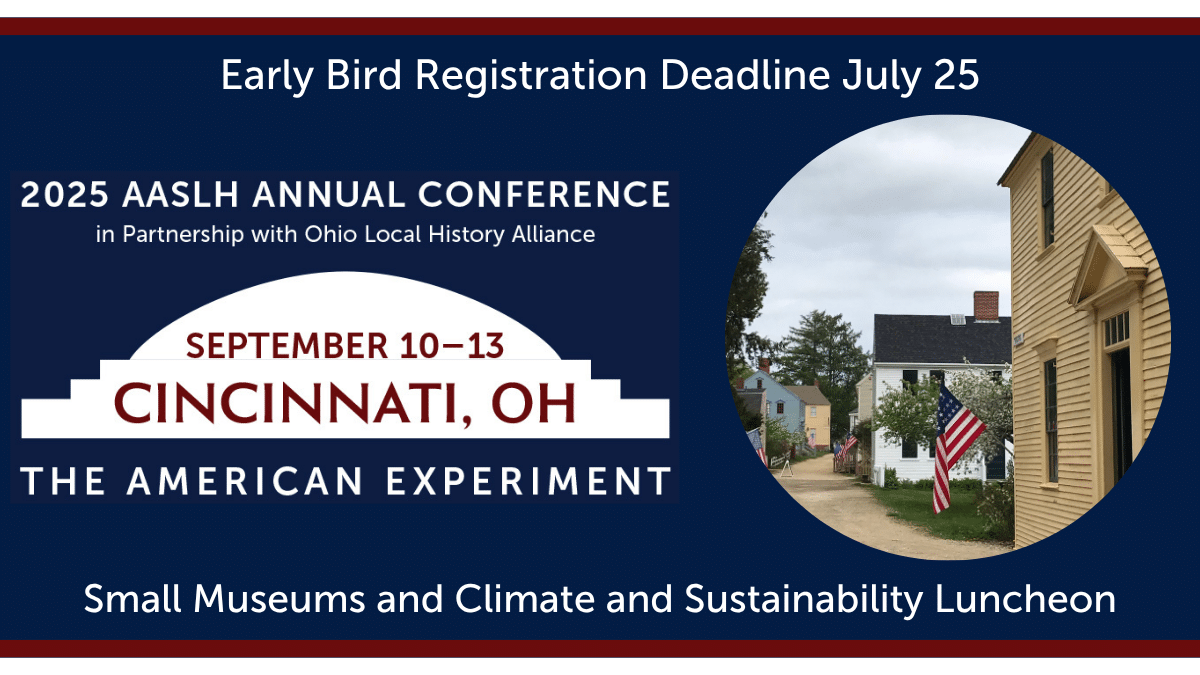By Kim Fortney, Deputy Director, National History Day
National History Day (NHD) is a year-long program that seeks to improve the teaching and learning of history. Students in grades 6-12 engage in rigorous historical research on a topic of their choice and develop entries for competition, beginning on the local level. Winners advance to regional and state/ affiliate contests, and the best of the best journey to the University of Maryland in June for the national contest.
NHD celebrates history and creativity, urging students to select a topic of interest to them. All they have to do is justify their topic’s significance in history as it relates to an annual theme. The themes are broad, on purpose, to give students more room. For 2013, Turning Points in History challenges students to identify people, ideas, or events that created change of some variety.
Students are encouraged to select local history topics. Why? Resources are available to them. Where? Your small museum, library, or archival institution. While the students develop an affinity for your institution, they also build a relationship with the community at large. They take ownership of their topic and will eagerly tell anyone about what they’ve learned. Well, some of the students are more gregarious than others, which is why NHD provides them with five categories from which to choose as they prepare their research for competition. Students may write a historical paper, build an exhibit, stage a performance, craft a web site, or assemble a documentary. There’s something for every learning style.
How can you help? Stay tuned each June to the announcement of the following year’s annual theme. Have a brainstorming meeting to come up with topics that fit the theme AND require the use of items in your collection. Communicate these with area middle- and high-schools as well as home schools. Your affiliate coordinator can tell you the schools that are participating in your area and the best way to reach the teachers. He or she may also add a description of your resources to a web site.
Worried about 11- to 18-year-olds running wild through your collections? Don’t be. NHD kids have a research mission along with some basic guidance from a teacher on how to conduct research. They will have questions as they try to navigate through your finding aids and such, but you and your staff or volunteers are already answering the same questions from adults. To help kids understand what you have, where to find it, and how to use it in accordance with your policies, prepare a one-page document spelling out such things. Include your hours, any applicable fees, etc. Send this along with your topics list.
Lastly, as you are considering your resources that apply to particular historical topics, don’t forget one of your greatest: your staff, volunteers, regular researchers, and trustees. You or others with expertise could wind up as interview subjects in a student’s project. How cool is that?
Photo credits: NHD National Contest.
Kim Fortney joined NHD in August 2009 after 13 years with the Heritage Center of Lancaster County in Lancaster, Pennsylvania. As vice president of the Heritage Center of Lancaster County, Kim directed all aspects of educational programming for teachers, students and adults, including National History Day. Her love for NHD, however, began even earlier. While teaching in 1990, she coached students in the creation of NHD entries, and during graduate school in 1995, she judged at a regional competition.




